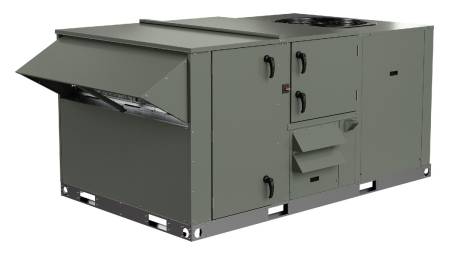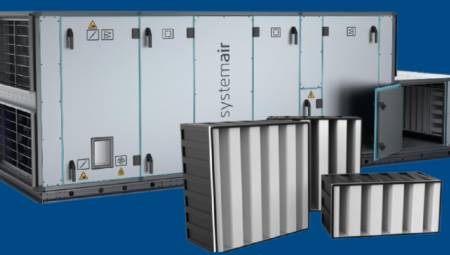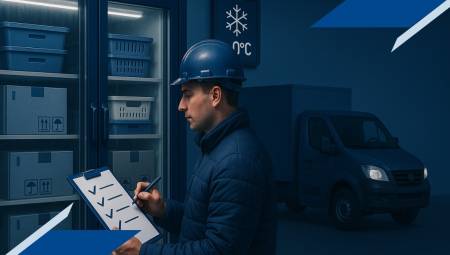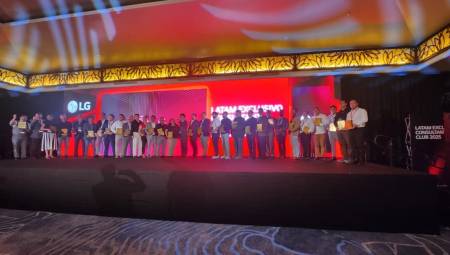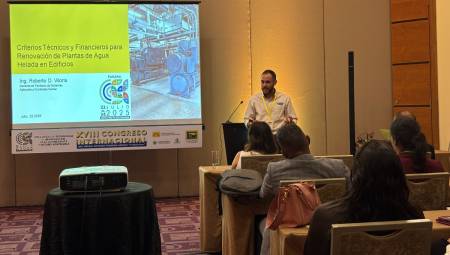by: Alejandra García Vélez
For example, units can be installed that handle all domestic systems such as lighting, air conditioning, blinds, doors and windows, locks, irrigation, appliances, water, gas and electricity supply, and countless other options. The benefits that can be obtained by automating a property are many, but this depends on a good installation and choosing the right equipment for each particular situation.
In this edition AC/R Latin America wishes to address some fundamental points of the issue of controllers; making a special emphasis on wireless controllers, devices that are consolidating as a very good option in the market. The main advantage of wireless controllers is obviously that no fieldbus cables are required. This implies some benefits that the end user may need depending on the installation they want to implement especially in terms of mobility and economy, since significant savings are presented when retrofitting the facilities, since modifying the wiring between the field controllers and the workstations can be very expensive, difficult and disruptive, according to Terry Hoffmann, BAS Marketing Director at Johnson Controls.
The benefits
"In new constructions you can find an additional benefit: mobility, because during the life of a building many modifications, additions and changes are made that may require the controllers to move; each transfer can cost a significant amount if the controller must be rewired," adds Hoffmann.
Dan Joyce, Channel Marketing Director at Honeywell, says there are advantages to using both wireless controllers and wired controllers; for example, in the case of wired exchanges, their reliability stands out, while in wireless devices that reliability can vary greatly from one manufacturer to another. Therefore, says Joyce, it is important to select a manufacturer that knows how to produce wireless equipment as efficient as wired, because if you have a good controller of this type, the advantages are many, "wireless devices can solve many problems, allowing you to install what previously seemed impossible," says Dan Joyce.
In conclusion, a detailed analysis of the equipment and the manufacturer that provides it should be made, however if a good unit is selected, you will have the following benefits:
1) Saving time, because its installation is faster,
2) Less discomfort when compared to the complexity of wiring
3) Less clutter, as the process of drilling, patching and painting is not necessary.
4) Much easier to install
5) Opens the possibility to connect other devices to the wireless network
However, the experts consulted by this magazine make some recommendations when deciding on one of these controllers; Joyce, says that it is advisable to use it in places that due to their conditions hinder the installation of wired equipment, and when the wireless device allows to better solve the needs of the client.
For his part, Terry Hoffmann complements the above by stating that, for him, devices that use wireless technology are appropriate for any type of application, except, for those places where there is significant interference, or where RF signals (radio frequency) are restricted due to the nature of the building, for example, buildings with metal partitions or where there are security issues where communications have been limited; However, Hoffman says that most of the facilities that had restricted the use of wireless devices are gaining more confidence in this technology, such as hospitals, which for a long time banned the use of cell phones or computers with WiFi. but which currently allow its use.
The operation of the controllers may vary depending on the manufacturer, but there are some basic parameters, common to all equipment, starting with a wired device, which communicates through a wired network using a standard protocol to which a radio transmitter is added. This RF artifact uses a communications protocol designed to minimize network traffic and provide a reliable and secure route for information.
The radio transmitter can be added directly to the controller in the case of smaller equipment, such as wireless thermostats, or it can be applied as a separate unit, this is the case with air handling units.
{mospagebreak}
A nascent market
Wireless technology already has a long way to go, in terms of technical development and the existing offer of automation products and solutions that can use them, however, its use is more widespread in industries such as security, while in the CVAC / R market there is a growing trend towards wireless, but according to Dan Joyce this market "is still in its infancy". "In a recent CVAC/R industry survey, 50% of contractors indicated that they expect wireless technology to play a bigger role in the next five years." Most likely, as these systems become popular in the United States, Latin America will follow the same path.
Terry Hoffmann agrees, saying the market for wireless controllers is just emerging. "We are in the educational phase of the application, where many of the potential users and specifiers of this technology still have doubts about the reliability and security that need to be answered. We have the answers, but we need to do a better job of communicating them."
The first projects in which wireless systems have been implemented have been very successful. That's why it's not unreasonable to think that the future of wireless controllers is very promising. In addition, if it is taken into account that the cost of copper continues to increase, the cost-benefit ratio of wireless systems can strengthen their use. Also, many wireless technologies work best when there are more devices in the building to act as signal repeaters and conditioners. This means that deploying multiple wireless systems in the same place allows for better results.
On the other hand, the foreign trade department of Full Gauge Controls, states that there are several that influence the growth of this type of technology in the market. Technological advancement itself, more reliable and far-reaching products are undoubtedly the main reasons. The growth of the economy is also important, since most companies are growing and need to invest, valuing the speed in making an expansion.
Some considerations
In the market there are countless devices that can be applied to any type of installation, so sometimes the decision-making process is difficult, choosing between a wired or wireless controller, or even deciding whether to use individual equipment for the functions of sensors, actuators and controllers or implement all the functions in a single unit.
That is why it is important to take into account the particularities of each building and each project, for example, we must think if what is being sought is a long-term solution for the control of the building, in which each final device has its own controller operating wirelessly and operating on a network while communicating peer-to-peer to the other equipment that require information from him or be provided.
In the case of a VAV box, the integration of sensors, actuators and controller is efficient, because all components can be mounted in the same compact space, such as small houses or apartments. For larger units or applications in which the control elements are distributed throughout a building, adding intelligence to each sensor and actuator is a decision that makes sense, this according to the opinion of Terry Hoffmann.
Full Gauge Controls gives us an interesting example in this regard, "depending on the installation, we must decide if we will use a central or different points. For example, in a surgical center, we can have lighting, humidification, cooling and others together in the same plant. If the humidification fails with individual controls, the surgical process continues. But, as an advantage we have the decrease in the cost of installation and the system."
There are many other variants that can influence when automating a building, but beyond the one chosen, it is important to remember that this type of facilities will generate short and long term benefits for people and companies that implement it in their buildings, not only by improving living conditions, increasing comfort in every way of the facilities and allowing significant savings in areas such as water, gas and electricity. These benefits are multiplied if you have an optimal system, in which the devices fully fulfill their function of identifying a physical variable, analyzing it and performing an action in accordance with the result of the analysis.




